Statistical Analysis System (SAS), is a powerful software suite widely used for advanced analytics, business intelligence, and data management by utilizing SAS Statements Functions and Procedures. Developed by SAS Institute, it offers a comprehensive platform for data manipulation, statistical analysis, and reporting. SAS provides a range of tools and functionalities for tasks such as data cleaning, modeling, and visualization. Its versatility makes it a favored choice in various industries, including finance, healthcare, and research, where precision and reliability in data analysis are paramount. With a robust programming language, rich set of procedures, and a user-friendly interface, SAS remains a cornerstone in the field of statistical computing and analytics.
SAS Statements Functions and Procedures
SAS Statement
In SAS programming, statements are fundamental building blocks that direct the flow of data and operations within a program. These commands instruct the software to perform specific actions, such as reading data, creating variables, or generating output. For instance, the LIBNAME statement assigns a library reference to a physical location, facilitating data access, while the DATA step combines various statements to manipulate and transform datasets. SAS statements provide the essential structure and functionality necessary for effective data processing and analysis.
SAS Function
SAS functions play a crucial role in data manipulation, transformation, and analysis by performing specific computations or operations on variables or data values. These functions cover a broad spectrum, from simple arithmetic calculations to complex statistical analyses. For example, the SUM function adds up numeric values within a dataset, while the MEAN function calculates the average. SAS functions enhance the flexibility and power of SAS programming, enabling users to derive meaningful insights and summaries from their data efficiently.
SAS Procedure
SAS procedures, commonly known as procs, are pre-built routines that streamline complex analyses and reporting tasks. These procedures offer a structured way to perform operations such as data summarization, statistical testing, and graphical representation. For instance, the PROC REG procedure is used for linear regression analysis, while PROC FREQ is employed for frequency distributions. SAS procedures provide a high-level interface, simplifying the execution of advanced analytical techniques and making it accessible to users with varying levels of statistical expertise. Each procedure is designed to efficiently execute specific tasks, contributing to SAS’s reputation as a comprehensive and user-friendly analytics platform.
SAS STEPS
1 DATA Step
Data step is one of most common function to create SAS Data set.
SAS CODE OUT PUT
OUT PUT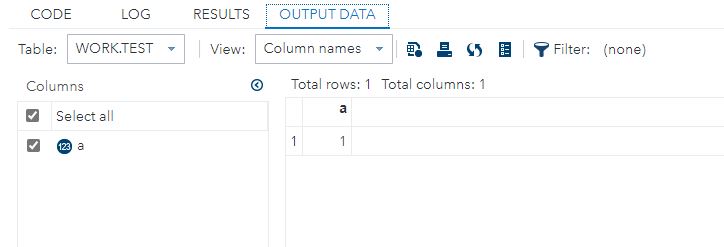
2 Proc Step
The Proc (procedure) in SAS is used for data manipulation, analysis, and reporting, providing a structured way to perform various tasks within the SAS environment.
SAS CODE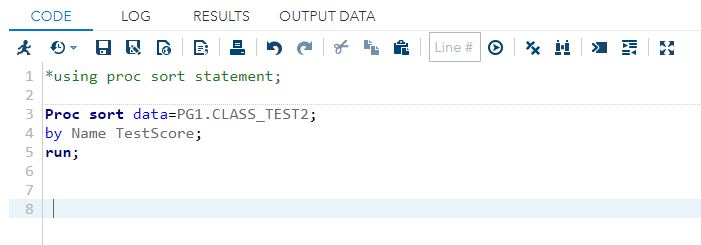
OUT PUT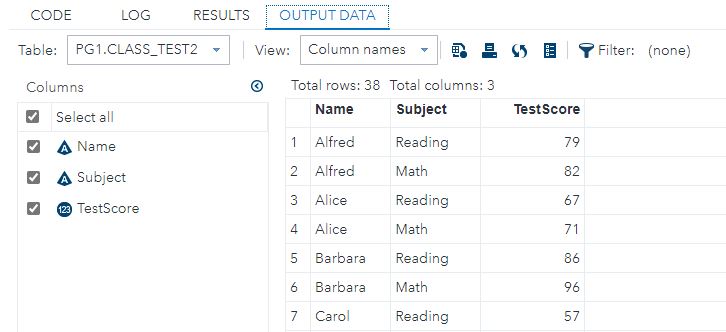
SAS Statements
3 Libname Statement
Libname statement in SAS is used to assign a library reference to a physical location, facilitating access and management of datasets within SAS program.
SAS CODE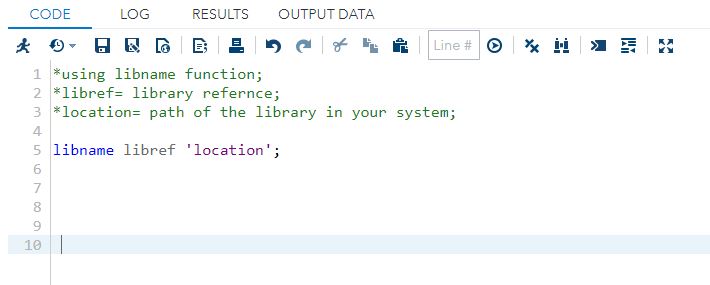
4 Input and Datalines Statement
INPUT statement in SAS is used to define variable attributes when reading data, while DATALINES is used to provide inline data within the data step for testing or small datasets.
SAS CODE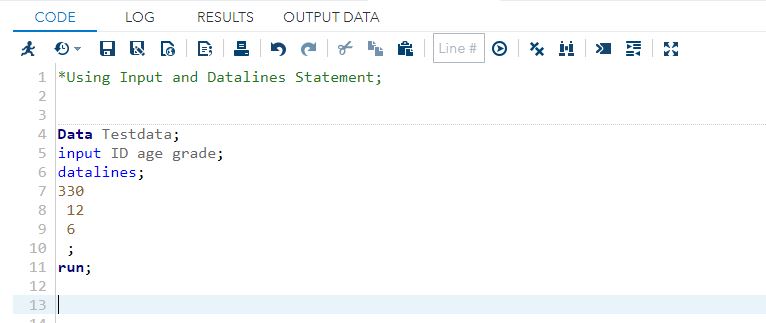
OUT PUT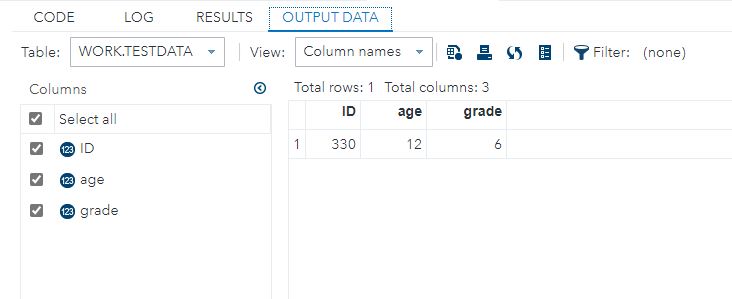
5 Filename Statement
FILENAME statement in SAS is used to assign a logical name to an external file, enabling data input/output operations and facilitating file reference through the program.
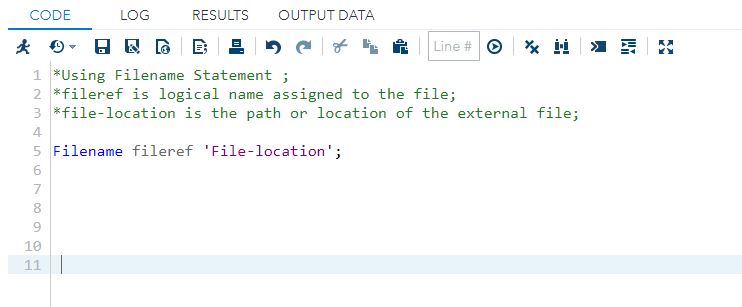
6 Infile Statement
INFILE statement in SAS is used specify the location and attributes of ab external file for reading input data into a SAS dataset.
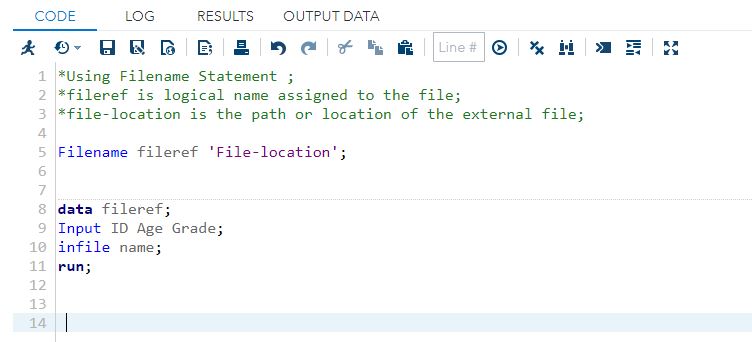
7 Set Statement
SET Statement in SAS is used within a data step to read and process observations from an existing dataset, enabling data manipulation and analysis.
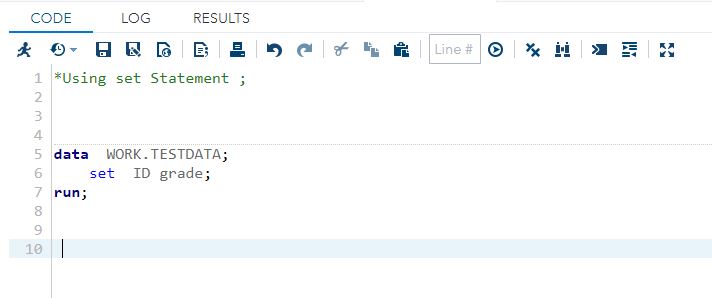
8 IF Then Statement
In SAS programming, the IF-THEN statement is a fundamental conditional statement that directs the flow of the program based on specified conditions. This statement allows programmers to execute a block of code only if a particular condition is true. The syntax typically involves a logical condition followed by the THEN keyword and the subsequent action or set of actions to be performed if the condition evaluates to true. For example, in a DATA step, an IF-THEN statement might be employed to filter or transform observations based on certain criteria. This conditional logic enhances the flexibility of SAS programs, enabling the implementation of tailored data processing, analysis, and reporting based on the specific requirements of the task at hand.
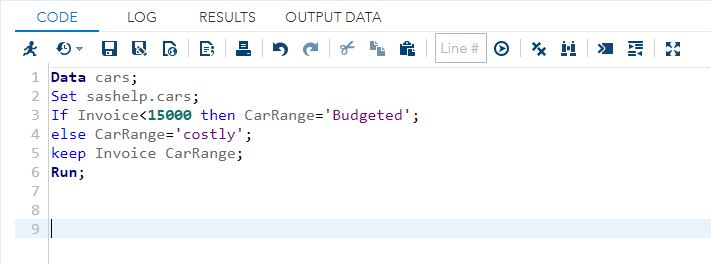
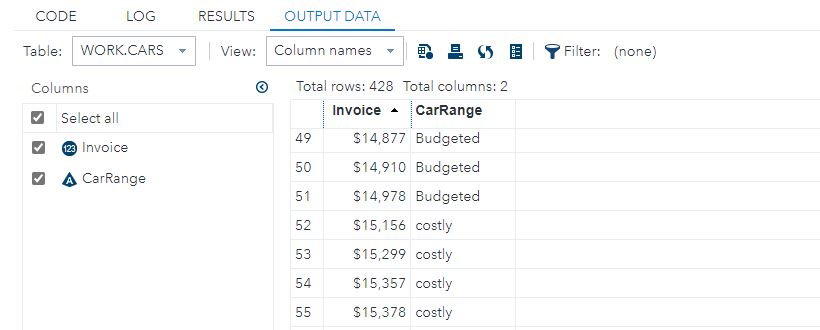
9 Keep and Drop Statement
In SAS programming, the KEEP and DROP statements are vital tools for data management within the DATA step. These statements allow users to selectively retain or exclude variables from a dataset. The KEEP statement specifies the variables that should be retained in the output dataset, discarding all others. Conversely, the DROP statement identifies variables to be excluded from the resulting dataset, retaining the rest. This capability is particularly useful for streamlining datasets by including only the essential variables needed for analysis or reporting. Whether you’re working with large datasets or focusing on specific analyses, the KEEP and DROP statements offer a concise and efficient means to tailor datasets to meet the exact requirements of your SAS program.
Keep
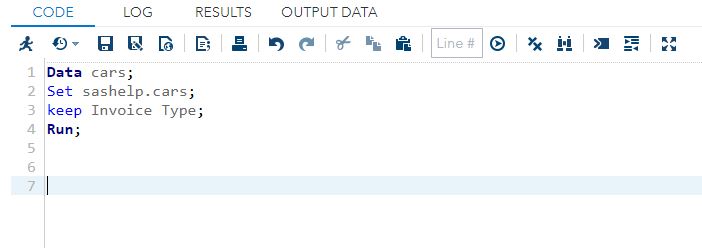
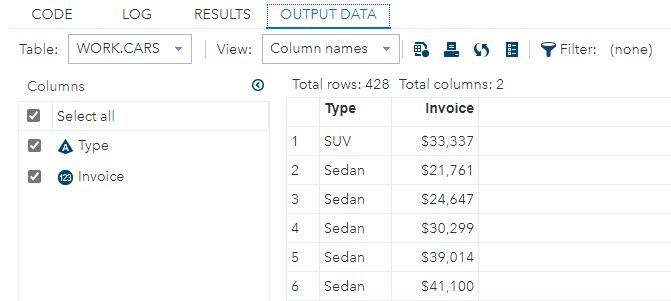
Drop
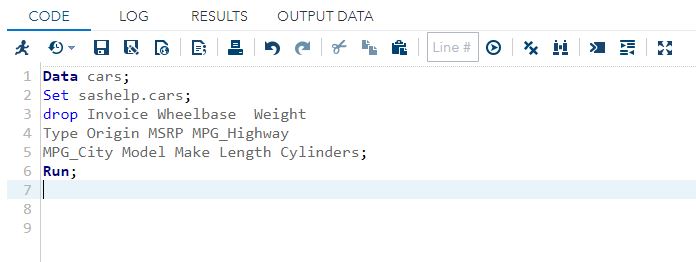
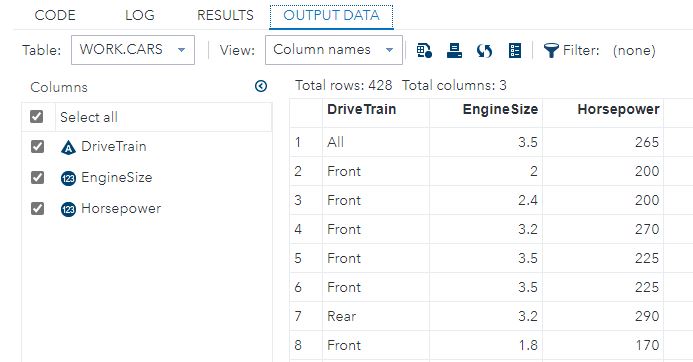
10 Merge Statement
MERFE statement in SAS combines dataset based on a common variable, allowing the creation of a consolidated dataset with information from multiple sources.
11 Sum Function
SUM function in SAS is used to calculate the total of numeric values, either across observations or within specific group defined by a BY Statement.
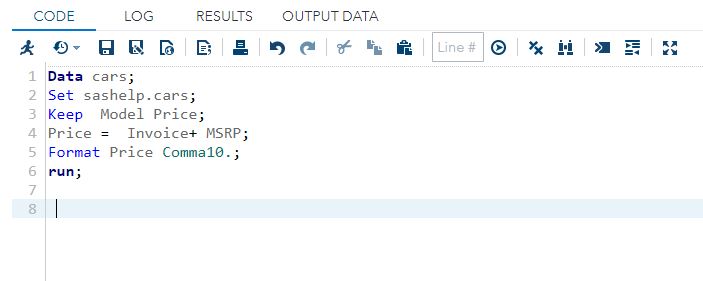
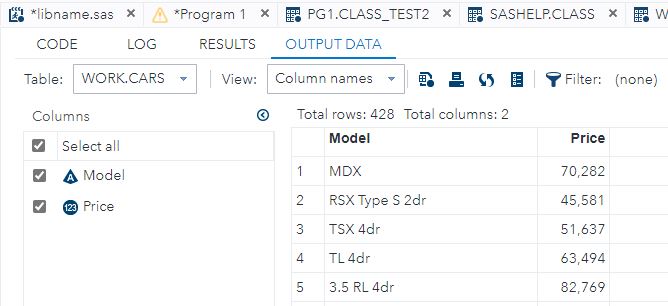
12 Mathematical Operation
In SAS, mathematical operations are performed using arithmetic operators like + (addition), – (subtraction), * (multiplication), and / (division) within data steps or expressions. Functions such as SUM, MEAN, and ROUND further facilitate numeric calculations, enhancing SAS’s capability for mathematical operations in data analysis and manipulation.
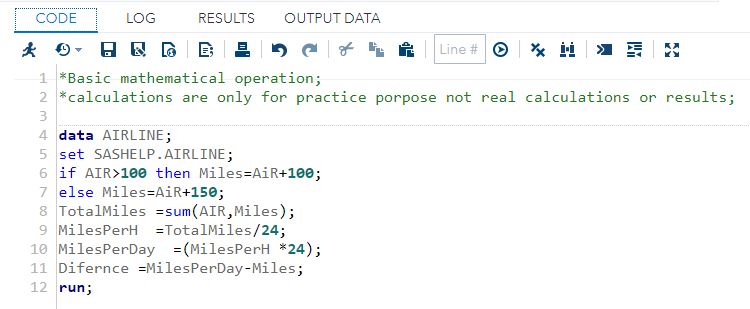
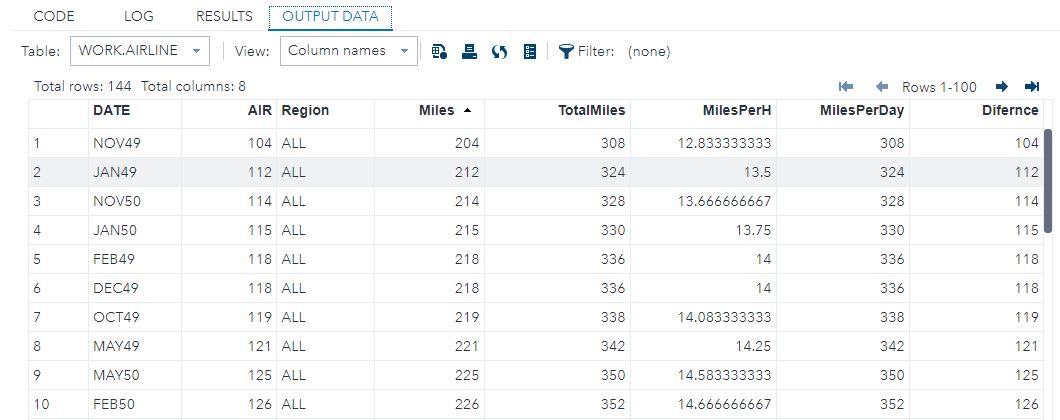
13 Random Variable (Exponential)
In SAS, define an exponential random variable using the EXPONENTIAL function to simulate time-to-event data with a specified rate parameter.
14 Random Variable (Uniform)
In SAS, generate a random variable following a uniform distribution between 0 and 1 using the `RAND` function with the `UNIFORM` distribution.
15 Square and Square Root
In SAS, use the ** operator to calculate the square of a variable, and the SQRT function to compute the square root of a variable.
16. Combine character variable
In SAS, concatenate character variables using the CAT function to combine their values into a single character variable.
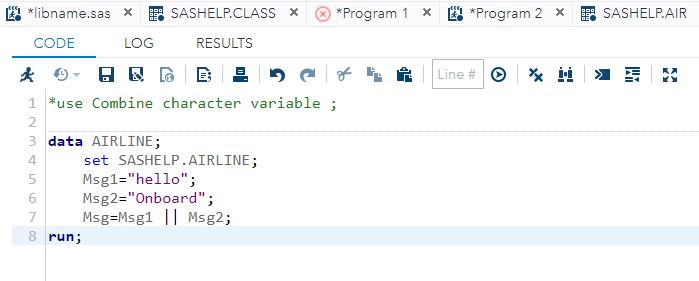
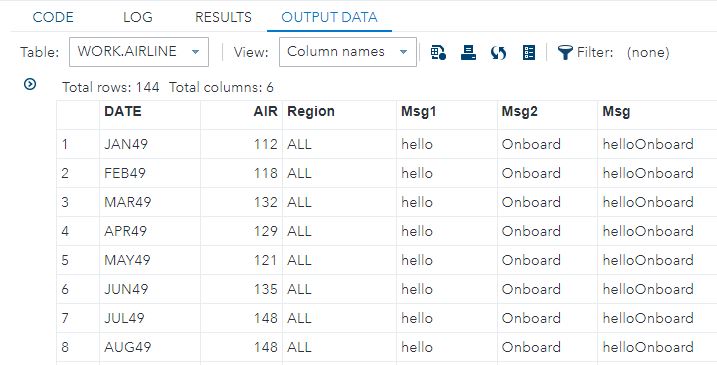
17. Substr
In SAS, use the SUBSTR function to extract or manipulate substrings within a character variable.
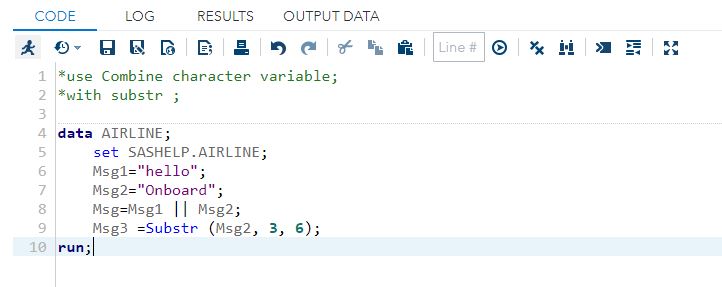
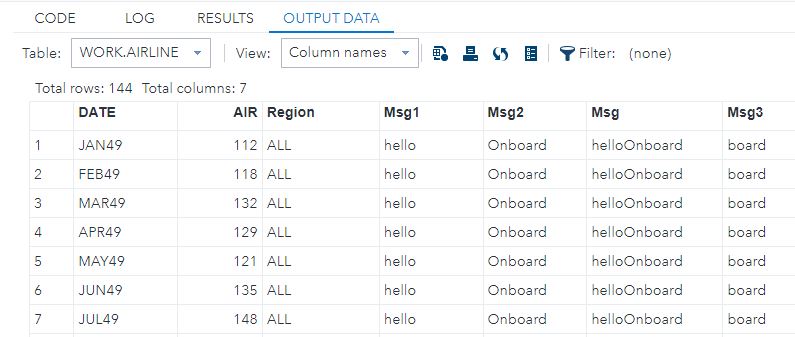
18. Trim / Compress
In SAS, use the TRIM function to remove leading and trailing blanks, or the COMPRESS function for more advanced character manipulation by removing specified characters.
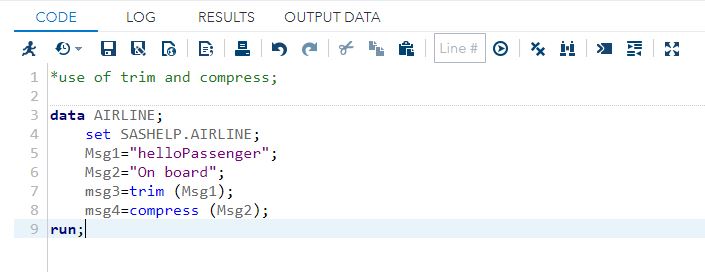
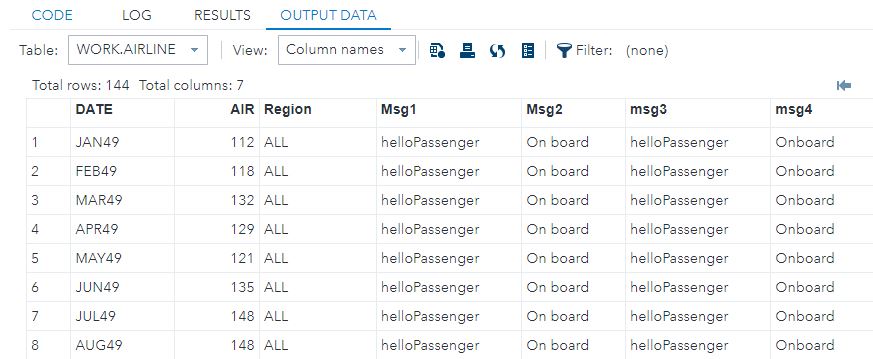
19. Index
In SAS, use the INDEX function to find the position of a substring within a character variable, or return zero if not found.
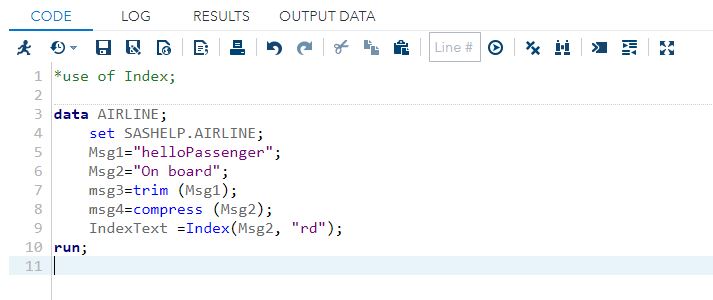
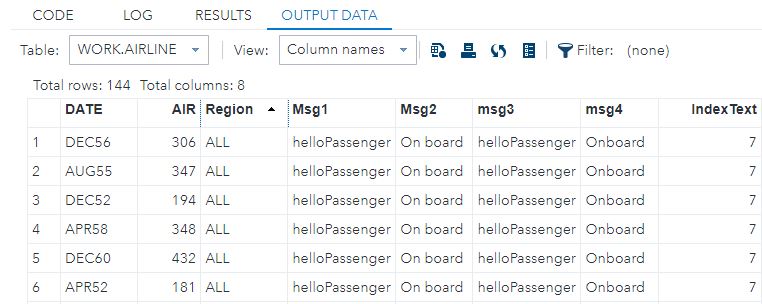
20. Upcase, lowcase, propcase
In SAS, utilize the UPCASE function for uppercase, the LOWCASE function for lowercase, and the PROPCASE function for proper case transformations of character variables.
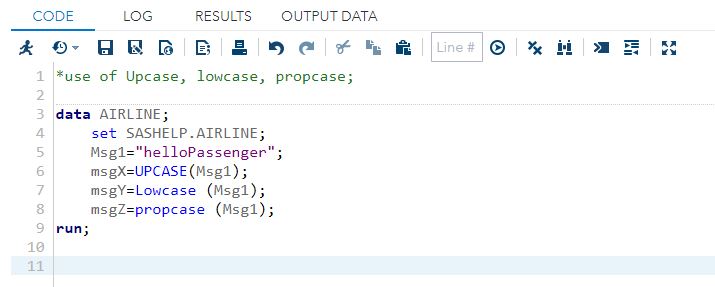
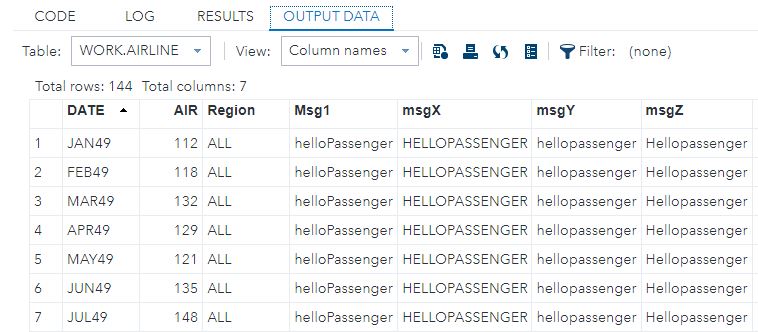
21. Label
In SAS, assign descriptive labels to variables using the LABEL statement for enhanced clarity in data interpretation.
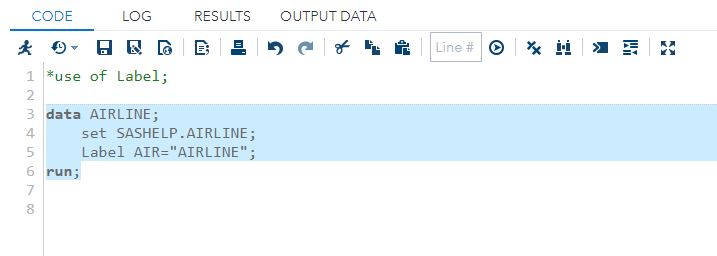
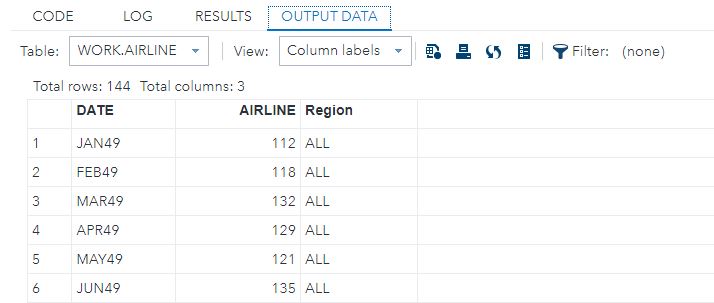
22. Length
In SAS, set the length of a variable using the LENGTH statement to define the maximum number of characters or numeric precision for optimal storage.
23. Format
In SAS, customize the appearance of data using the FORMAT statement to define the display format of variables in output tables or reports.
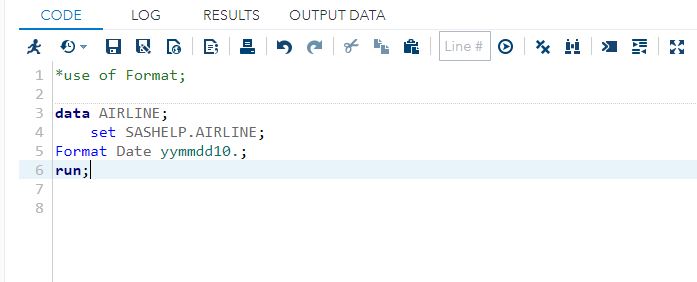

24. ABS
In SAS, use the ABS function to obtain the absolute value of a numeric variable, ignoring its sign.
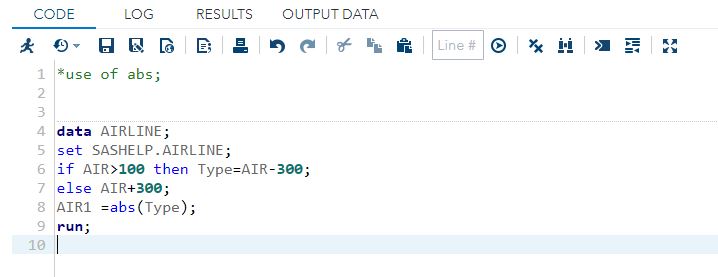
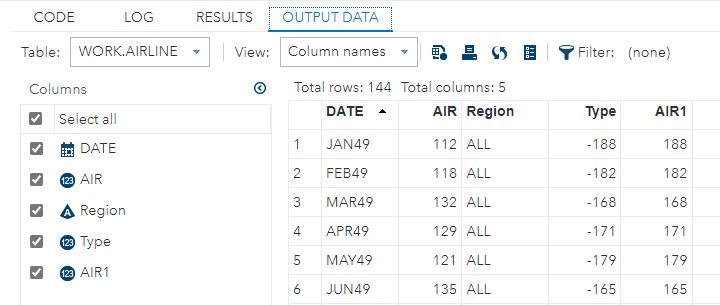
25. INPUT
In SAS, utilize the INPUT function to convert character data to numeric format within a data step.
26. PUT
In SAS, use the PUT function to convert numeric values to character format within a data step or for custom output formatting.
27. Log
In SAS, review the log to identify errors, warnings, and execution details, providing valuable information for debugging and program evaluation.
28. Mean, Min, Max
In SAS, use the MEAN, MIN, and MAX functions to calculate the mean, minimum, and maximum values, respectively, for numeric variables in a dataset.
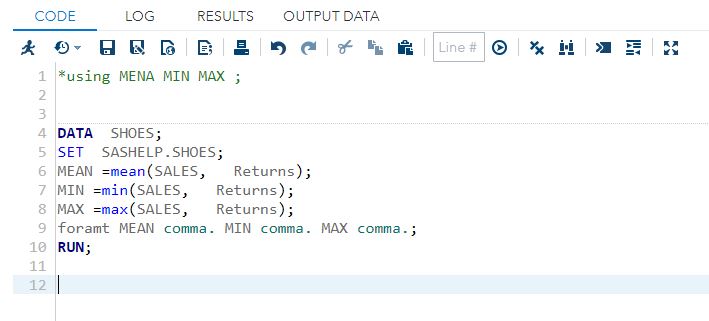
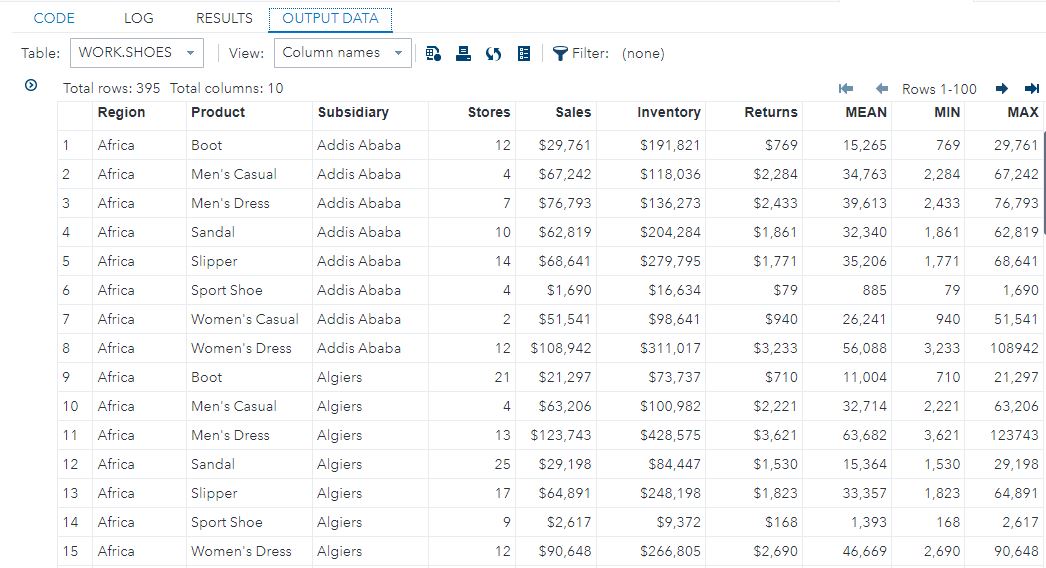
29. Rename
In SAS, utilize the RENAME statement to assign new names to variables, enhancing dataset readability and facilitating analysis.
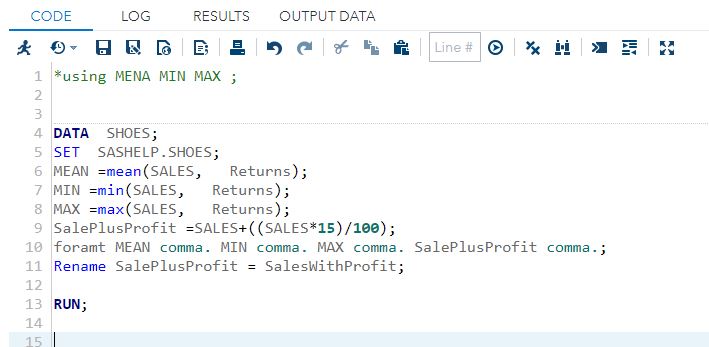
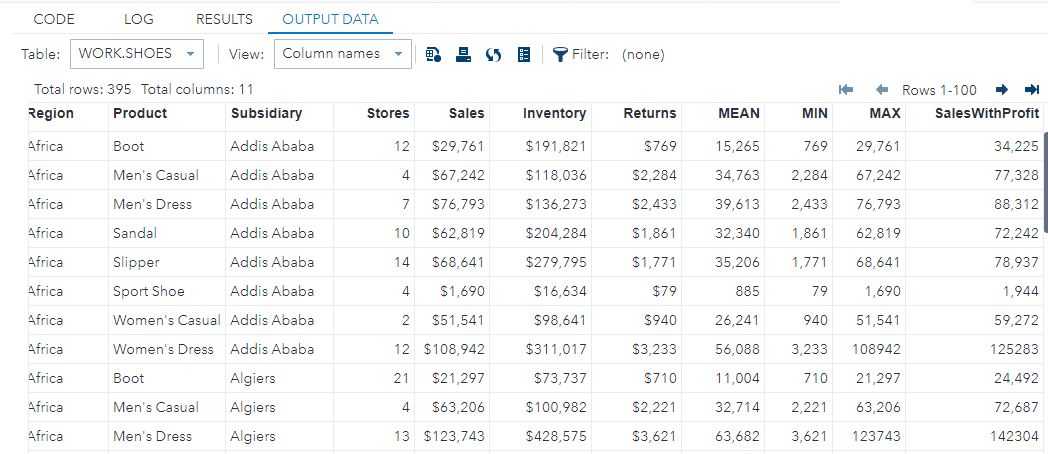
30. Round / Floor
In SAS, use the ROUND function for standard rounding of numeric values and the FLOOR function to obtain the largest integer less than or equal to a numeric variable.
SAS Procedures (PROC Step)
31. Proc Sort
In SAS, use PROC SORT to arrange datasets based on specified variables, facilitating efficient data retrieval and analysis.
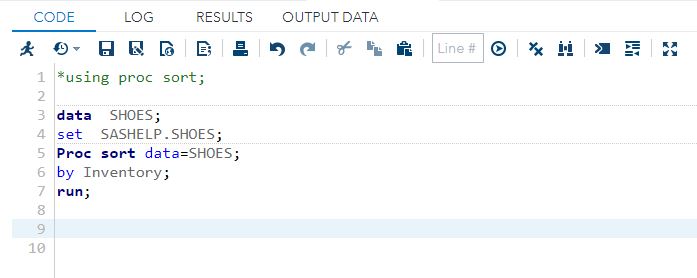
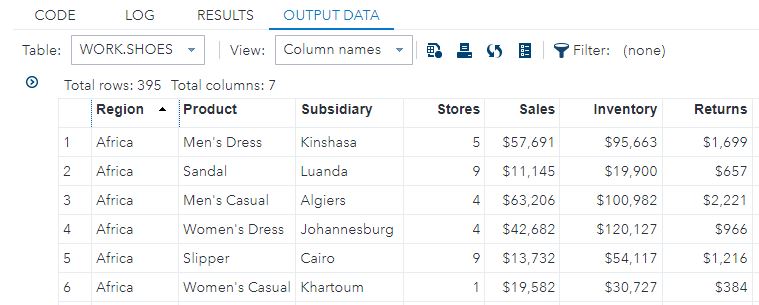
32. Proc Transpose
In SAS, employ PROC TRANSPOSE to restructure datasets by swapping rows and columns, facilitating a pivot-like transformation for improved data presentation and analysis.
33. Proc Freq
In SAS, use PROC FREQ to generate frequency tables, summarizing categorical variable distributions and aiding in descriptive statistical analysis.
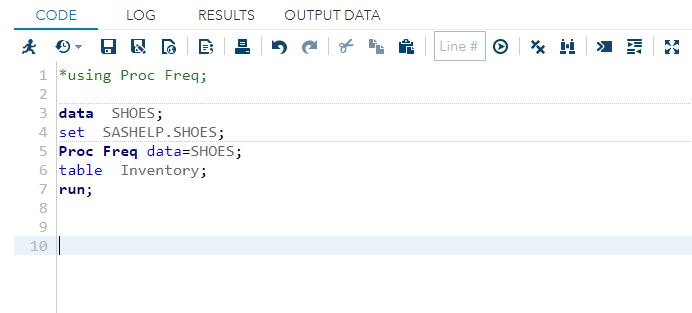
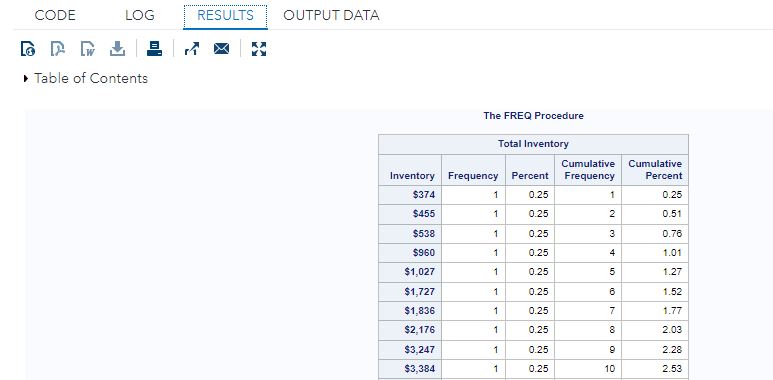
34. Proc Means
In SAS, utilize PROC MEANS to compute descriptive statistics such as means, medians, and quartiles for numeric variables, providing a summary of data central tendencies.
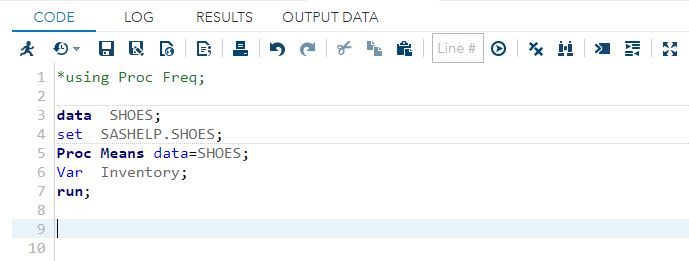
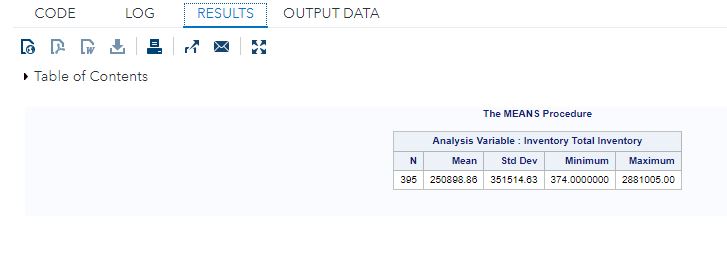
35. Proc GChart
In SAS, leverage PROC GCHART to create various types of charts and graphs, enhancing visual representation for data exploration and communication.
36. Proc Reg
In SAS, use PROC REG to perform linear regression analysis, assessing relationships between variables and deriving regression coefficients and statistics.
37. Proc GLM
In SAS, utilize PROC GLM for general linear modeling, facilitating analysis of variance (ANOVA) and regression with flexibility in experimental design and variable relationships.
38. Proc Gplot
In SAS, employ PROC GPLOT to create customizable plots and graphs, providing a versatile tool for visualizing relationships in data analysis.
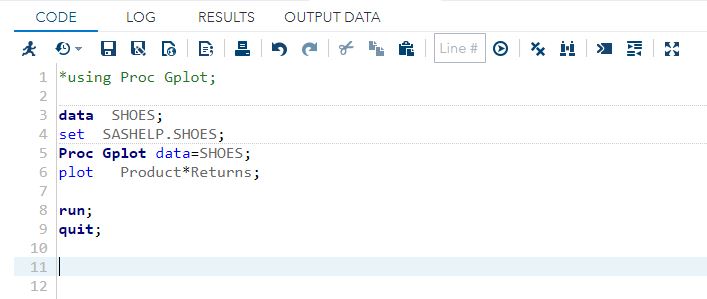
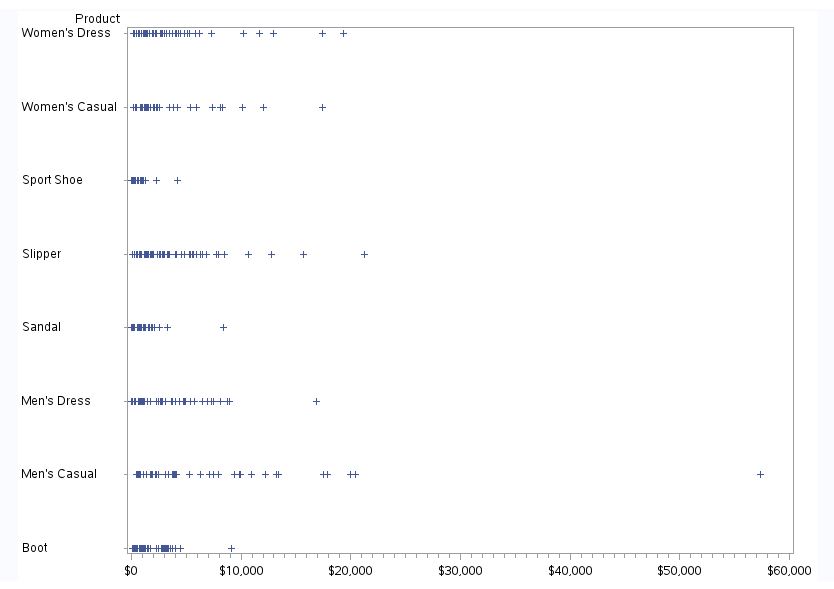
39. Proc Print
In SAS, use PROC PRINT to display the contents of a dataset, providing a straightforward way to view variable values and their arrangement in tabular form.
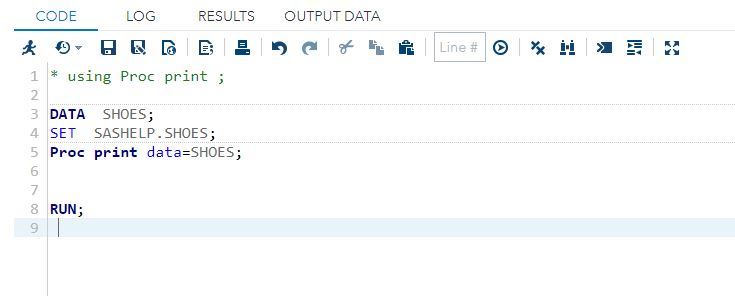
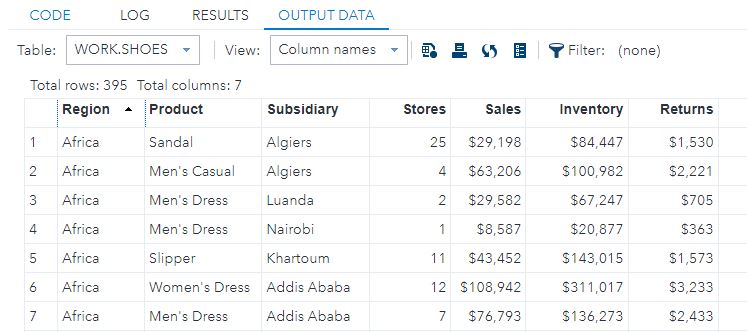
40. Proc Report
In SAS, utilize PROC REPORT for flexible and dynamic table generation, allowing detailed customization of report layouts and summaries for comprehensive data presentation.
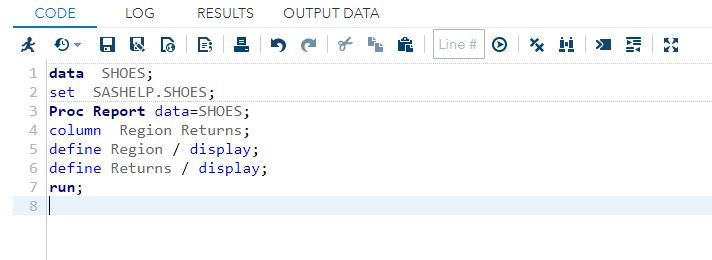
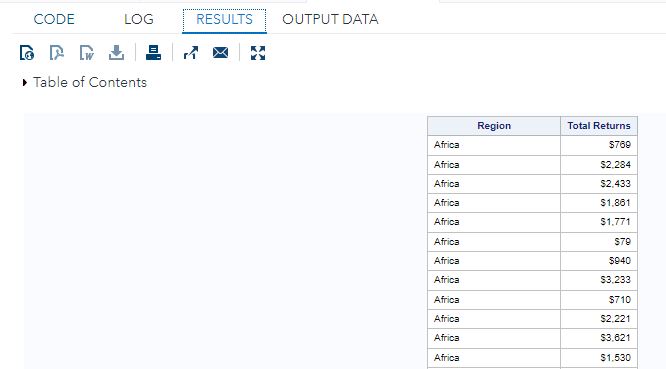
Data used: SASlibrary
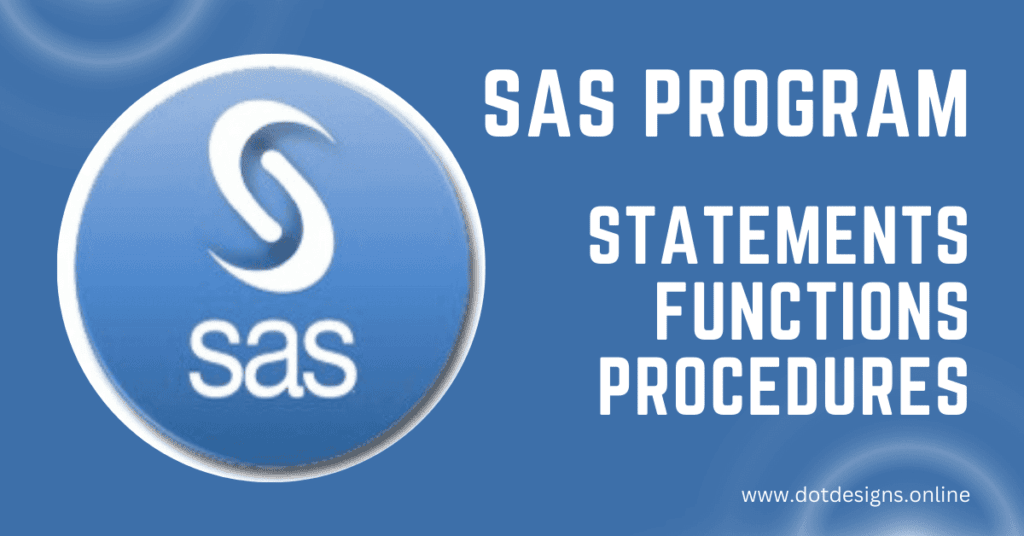
One comment